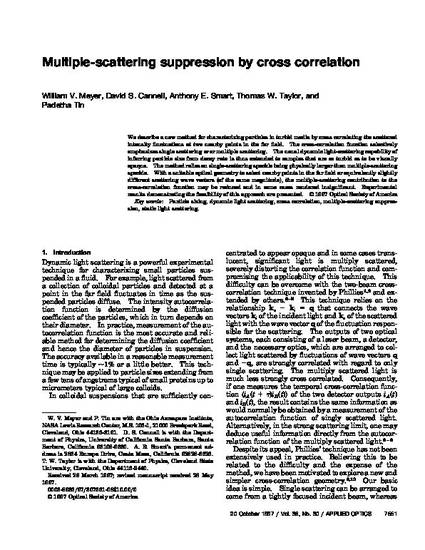
We describe a new method for characterizing particles in turbid media by cross correlating the scattered intensity fluctuations at two nearby points in the far field. The cross-correlation function selectively emphasizes single scattering over multiple scattering. The usual dynamic light-scattering capability of inferring particle size from decay rate is thus extended to samples that are so turbid as to be visually opaque. The method relies on single-scattering speckle being physically larger than multiple-scattering speckle. With a suitable optical geometry to select nearby points in the far field or equivalently slightly different scattering wave vectors (of the same magnitude), the multiple-scattering contribution to the cross-correlation function may be reduced and in some cases rendered insignificant. Experimental results demonstrating the feasibility of this approach are presented. (C) 1997 Optical Society of America.
